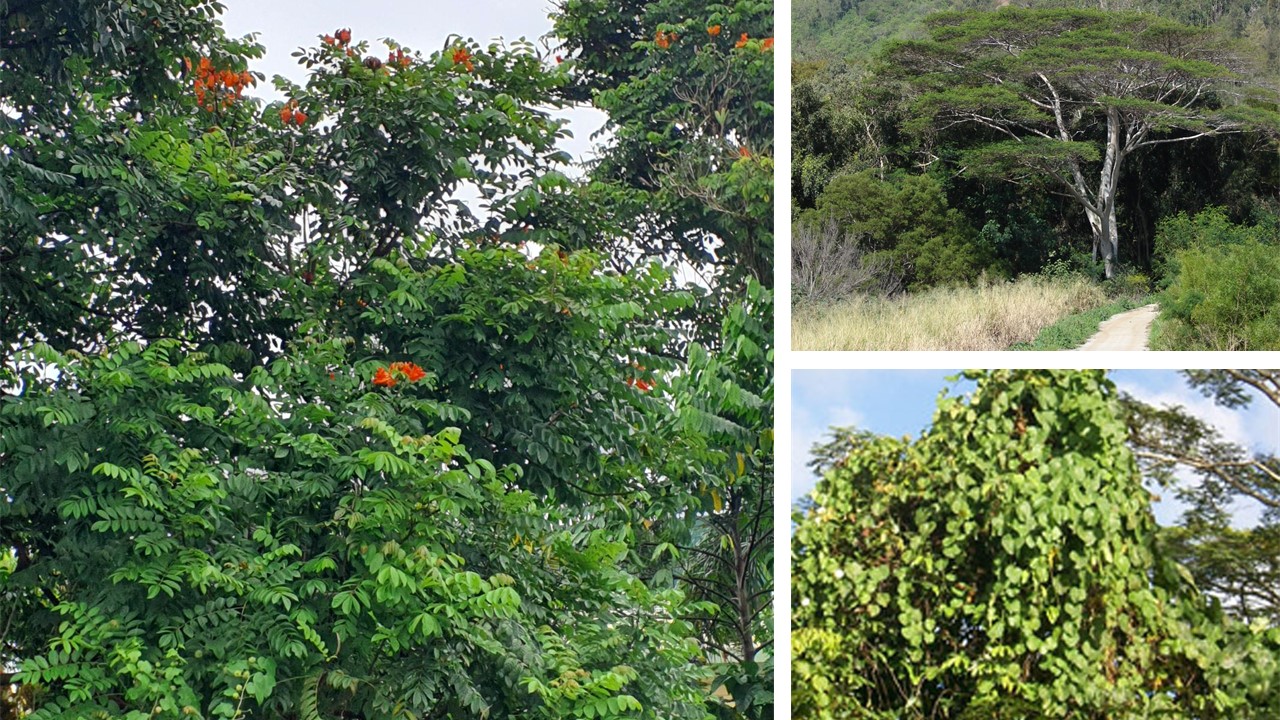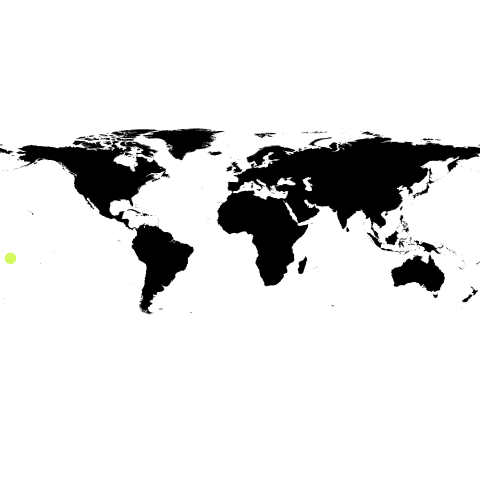Disclaimer:
Please be aware that the content herein has not been peer reviewed. It consists of personal reflections, insights, and learnings of the contributor(s). It may not be exhaustive, nor does it aim to be authoritative knowledge.
Title
Please provide a name for your action learning plan.
Using Collective Intelligence to map Invasive Alien Species impacting Samoa's biodiversity
Challenge statement
Challenge type: If you are working on multiple challenges, please indicate if this is your "big bet" or "exploratory" challenge.
Please note: we ask you to only submit a maximum of 3 challenges - 1x Big Bet, 2x Exploratory. Each challenge must be submitted individually.
EXPLORATORY
Challenge statement: What is your challenge? (Please answer in specific terms: "Our challenge is that...”.)
Our challenge is that we need to urgently invest in management systems that can withstand climate crises, while also fostering cohesive and active ownership among communities to integrate sustainable practices that enhance resilience against disasters in particular impacts on biodiversity.
Background: What is the history of your challenge? What is causing or driving it? Who is involved? How does the current situation look like? What undesired effects does it produce?
Severe tropical cyclones are common during the wet season. Samoa’s vulnerability to flooding during storms and intense rainfall events is amplified by the country’s steep and mountainous topography e.g. king tides and rainfall runoff – land degradation – agriculture expanded into protected zones. At present, there are systems that monitor climate datasets but there is no national or centralized system to monitor & evaluate the long term effects of climate change. The available data on the successes/failures of adaptation and DRM interventions are fragmented. The situation reflects the inability of technical institutions to provide the science behind the climate change phenomena and to do so in a user-friendly manner that could be easily understood by all. Information that goes out to the public is fragmented, not accessible if people want to know more and language and presentation is not community/user friendly.
Samoa's biodiversity is one such area that while there has been comprehensive research undertaken by both the Ministry of Natural Resources & Environment and the Ministry of Agriculture & Fisheries to better understand its impact and designing of control programmes. There is however, minimal data on how such information can be used to empower communities to enact a whole of island approach to managing Invasive Alien Species.
Quantitative evidence: What (official) data sources do you have on this challenge that better exemplifies the importance and urgency of this frontier challenge? You can add text, a link, or a picture.
Qualitative evidence: What weak signals have you recently spotted that characterizes its urgency? Please provide qualitative information that better exemplifies the importance and urgency of this frontier challenge. You can add text, a link, or a picture.
Fue Lautetele, a native species, has become a widespread and troublesome problem in many areas due to disturbance in native forests causing biological release. Merremia vines now dominate up to 50% of Samoa's remaining lowland native forests. This invasive species not only kills adult plants and prevents new ones from growing, but it also alters ecosystems on a large scale, reducing habitats for native organisms like forest birds. Additionally, destroying and changing native forest systems can lead to localized climate modifications, including temperature increases and rainfall reductions. Changes like these can work together with other ongoing problems to speed up the degradation of the forest. As the forest dies or is changed, this can cause more runoff, soil erosion, and lower water quality. Ultimately, this could result in more sedimentation and the death of reefs, fish, and mollusks that depend on the reef.
Tamaligi Uliuli (Albizia chinensis) and Tamaligi Paepae (Falcataria moluccana) were brought to Samoa to help improve soil fertility in agriculture because they can fix nitrogen. But now, they are found all over the country and have taken over many forested areas, particularly in the uplands, where they compete with and beat out many native species.
The African Tulip Tree was brought to Samoa for decoration, but now it is widespread across the country. It is an invasive species that can take over abandoned land and native forests, forming thick stands that are challenging to manage or eliminate.

Value proposition: What added value or unique value proposition is your Accelerator Lab bringing to solving this challenge? Why is it your Lab that needs to work on this challenge and not other actors within UNDP, other stakeholders in the country respectively? Why is it worth investing resources to this challenge?
By providing real time data on Invasive Alien Species, we will help communities better understand the importance of biodiversity and managing of invasive alien species.
Short “tweet” summary: We would like to tweet what you are working on, can you summarize your challenge in a maximum of 280 characters?
Real-time data on Invasive Alien Species will improve community understanding of biodiversity & management. Let's protect our ecosystems together! 🌿🌍 #InvasiveSpecies #Biodiversity #EcosystemProtection
Partners
Who are your top 5 partners for this challenge? Please submit from MOST to LEAST important and state Name, Sector and a brief description of the (intended) collaboration.
Please state the name of the Parter:
1. Village community to be engaged in participating in crowdmapping of invasive alien species at the selected grid for testing.
2. Ministry of Natural Resources & Environment to be an implementing partner in the crowdmapping aspect in particular providing the necessary technical expertise.
3. Ministry of Agriculture & Fisheries - same as MNRE.
4. Environment & Climate Change Unit of UNDP - align the efforts of AccLab to UNDP MCO priorities.
5. Samoan GIS society - potential partner to provide analysis on how the CI testing plans can be developed into an MVP for a whole of island approach.
What sector does our partner belong to?
Government (&related)
Please provide a brief description of the collaboration.
The Accelerator Lab will collaborate with the select community to inform its testing plans and useability of information collected. This will in turn be used to inform Government priorities.
Is this a new and unusual partner for UNDP?
No
Learning questions
Learning question: What is your learning question for this challenge? What do you need to know or understand to work on your challenge statement?
1. Do communities see value & benefit from the proposed solution?
2. What would it take to onboard communities?
3. How would we reach and engage communities?
4. How can collective intelligence enable a whole of island approach to IAS data empowerment?
To what stage(s) in the learning cycle does your learning question relate?
Sense, Explore, Test
Usage of methods: Relating to your choice above, how will you use your methods & tools for this learning question? What value do these add in answering your learning question?
We want to understand if enabling young people to collect data via crowdmapping is of real benefit and value to their communities.
Existing data gaps: Relating to your choice above, what existing gaps in data or information do these new sources of data addressing? What value do these add in answering your learning question?
1. Limited awareness of IAS risk and of prevention, reduction and tools across sectors and amongst residents and visitors.
2. Limited capacity to mount a comprehensive and effective suite of biosecurity tools and mechanisms at both the national and island levels to reduce risks of invasions by non-native pest organisms or IAS.
3. Limited capacities to mainstream gender into IAS management and low participation of women in existing activities/programs related to IAS and sustainable land management.
Crowdmapping can empower communities to actively manage invasive alien species by leveraging collective intelligence. By contributing to the creation and updating of a comprehensive and up-to-date map of invasive species, individuals can gain a better understanding of the extent of the problem and make more informed decisions about how to manage it. In turn, an informed community is more likely to participate in decision-making processes related to invasive species management.
Closing
Early leads to grow: Think about the possible grow phase for this challenge - who might benefit from your work on this challenge or who might be the champions in your country that you should inform or collaborate with early on to help you grow this challenge?
Commmunities most affected by invasive alien species would benefit from these tests.
END OF ACTION LEARNING PLAN: Thank you! The form saves automatically and your submission has been recorded. You may now exit this window.


 13Climate action
13Climate action

 15Life on land
15Life on land
Comments
Log in to add a comment or reply.